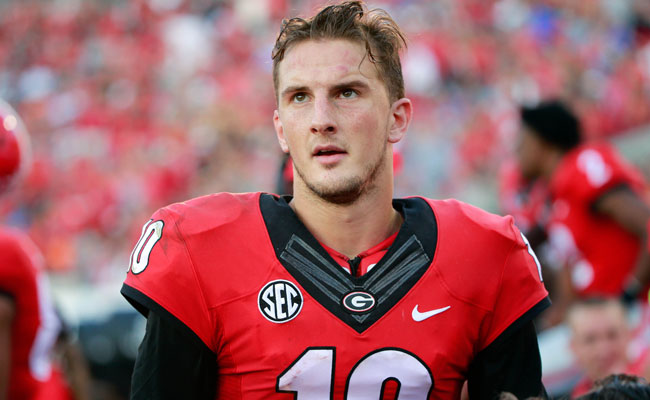
A look at the SEC's 2012 cycle quarterback class
Why has the Southeastern Conference as a whole been lacking at the quarterback position from a depth and overall performance standpoint in recent seasons?
The answer may lie in the 2012 recruiting cycle, when SEC schools swung and missed on a LOT of signal callers.
This bunch may go down for collectively the worst group of quarterbacks signed by a conference in a single cycle. Hindsight, of course, is 20/20, and many of these guys had tools that didn’t develop for whatever reason.
Zeke Pike, Auburn
Patrick Towles, Kentucky
Alec Morris, Alabama
Matt Davis, Texas A&M
Faton Bauta, Georgia
Maty Mauk, Missouri
Brendan Nosovitch, South Carolina
Patton Robinette, Vanderbilt
Jalen Whitlow, Kentucky
Skyler Mornhinweg, Florida
Bo Wallace, Ole Miss
Of this group, Mauk and Wallace are the two most accomplished. Wallace started for three years at Ole Miss and led the Rebels to the Peach Bowl as a senior. Mauk was instrumental as a reserve during the Tigers’ 2013 SEC East title and then was the starter as Missouri won the 2014 SEC East title, though he was benched/suspended last season as true freshman Drew Lock took the reigns for the Tigers.
The rest? Towles, Morris, Davis, Bauta, Nosovitch, Robinette, Whitlow and Mornhinweg all transferred.
Quarterback is the toughest position on the field to evaluate these days and the proliferation of 7-on-7 leads to “fools gold” takes in a lot of ways. With no pass rush, players can develop their game in that setting to look mighty impressive, but it doesn’t always translate to the field.
A quick story: whenever Clemson quarterback DeShaun Watson — who was for my money the best in college football last season — camped or played 7-on-7, he wasn’t always a standout compared to some others that were there. But Watson started for Gainesville (Ga.) High since he was a freshman and broke the state of Georgia’s all-time passing record … on the field in pads in 11-on-11 tackle football. That’s what made him special and you would have never known it just glancing at him in a non-contact setting.
That’s not to say that great 7-on-7 quarterbacks never work out because certainly there are those that do. Teddy Bridgewater, for example, was a GREAT 7-on-7 talent. But 7-on-7 and camp evaluation of quarterbacks is just yet another part of the crapshoot that is evaluating quarterback talent.
What’s even more interesting about this is that a program that doesn’t have a solution at the quarterback position rarely achieves at the level of which it is capable.
What if LSU and Georgia had great quarterbacks last season? Those two programs are talking playoff instead of coaching change at the end of the year. More than one coach has commented that when you don’t have good play at that position, it impacts your entire program.
Unfortunately, it’s harder than ever to evaluate the position. There are so many unknowns in terms of the necessary intangibles needed to play at a high level at that position. A guy can have all of the tools physically and just not have it mentally and that negatively impacts the entire team.
Quarterback recruiting in the SEC certainly has improved since the 2012 cycle, which looking back was historically bad. But then again, that’s just on paper and we will never truly know until they strap the pads on and start playing ball again.
